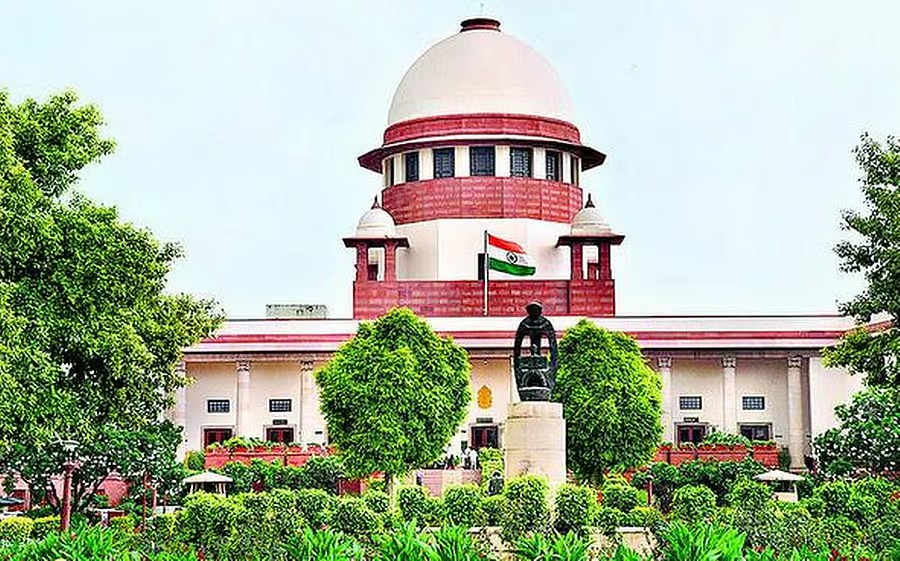A.N. Jindal, J.@mdashAccused-Appellants Rattan Chand (since expired during the pendency of appeal) and Kimti Lal were tried for the offence u/s 304/34 IPC for causing death of Vijay Kumar son of Tilak Raj by spreading live electric wires in their field. Consequently, both were convicted u/s 304 IPC and sentenced to undergo rigorous imprisonment for a period of 7 years and to pay a fine of Rs. 500/- and in default of payment of fine to further undergo RI for 2 months each.
2. The story as unfolded by Kamlesh Kumar before ASI Deep Singh, P.S. Durangla is that on 29.8.1992 at about 7 a.m. after easing herself in the fields, when she returned to the house, she saw that her son Vijay Kumar aged about 13-14 years after leaving the school bag in the house and had gone outside. After waiting him for some time, she accompanied her husband Raj Kumar for searching him. While going to the fields of Rattan Chand, they sported Vijay Kumar lying dead in the fields due to the electric shock which he attracted from the live wires spread in the field of accused with the intention to kill the rats. On the aforementioned statement Ex. PE, FIR Ex. PD was recorded at Police Station Durangla. Investigation commenced and ASI Deep Singh went to the spot and prepared the inquest report. Dead body of Vijay Kumar was sent to the Hospital for post-mortem examination. Investigating Officer prepared rough site plan of the place of occurrence; electric wire was taken into possession vide recovery memo Ex. PF; statements of the witnesses u/s 161 Code of Criminal Procedure were recorded. Subsequently, offence was converted from Section 304-A to 304 IPC and challan was presented against the accused in Court. Charge against the accused u/s 304 IPC was framed to which he pleaded not guilty and claimed trial.
3. During investigation, prosecution examined as many as seven witnesses. PW-1 Dr. Rana Verma, who conducted the autopsy on the body of Vijay Kumar on 30.8.1992 and found three injuries on his body. He opined vide post-mortem report Ex. PA that Vijay Kumar died as a result of shock because of electric injury, which was sufficient to cause death in the ordinary course of nature. All the injuries were ante-mortem in nature. Probable duration between injuries and death was immediate and between death and post-mortem was 24 hours. PW-2 Kamlesh Kumari is the mother of the deceased, who lodged the FIR. She reiterated all the facts as set up by her in the FIR. PW-3 Kasturi Lal also corroborated the prosecution version and stated that there was an electric current in the fields of the accused and the dead body of Vijay Kumar was found electrocuted. The wires were connected with the pole and wooden stick was used to disconnect the wires from the pole. PW-4 Dharam Singh is the Ex-Sarpanch of the village. He identified the body at the time of inquest. PW-5 Prem Kumar proved the site plan Ex. PJ and copy of Jamabandi Ex. PH according to which Rattan Chand was a co-sharer in the land in question. PW-6 Daulat Ram proved the photographs of the place of occurrence Ex. P-1 to Ex. P-4 and negatives thereof Ex. P-5 to Ex. P-8. PW-7 Deep Singh ASI is the Investigating Officer in the case. He proved the investigation conducted by him from time to time.
4. When examined u/s 313 Code of Criminal Procedure the accused denied all the circumstances appearing against them. During evidence they pleaded their false implication. Both the accused further explained that they did not instal any electric motor in the field for irrigation purpose nor did he obtain electric connection for this purpose from the electricity department. In fact, the electric motor is in the fields of Ajit Singh. In defence, they examined DW-1 Rajinder Parshad, who deposed that no electric connection was running in the name of the accused in the area of village Ogra and Kahna.
5. The trial ended in conviction, hence this appeal.
6. During the pendency of appeal, accused Rattan Chand died. Death certificate in this regard produced by Mr. Kuldeep Sanwal, counsel for the Appellants, has not been disputed by Ms. Reeta Kohli, DAG Punjab. Therefore, the appeal preferred by accused Rattan Chand stands abated.
7. As regards accused Kimti Lal, counsel for the Appellant has not disputed the fact that Vijay Kumar was found dead due to the electric current from the wires spread in the field but he stated that the field did not belong to accused-Appellant Kimti Lal but it was Rattan Chand s/o Milkhi Ram, who was the owner of the field. Therefore, accused Kimti Lal cannot be held responsible for the commission of crime.
8. Having given my thoughtful consideration to this contention, it may be observed that Kimti Lal is none-else but the son of Rattan Chand. This act cannot be said to be the handi-work of only Rattan Chand, who was an old man of 66 years at that time. Therefore, electric wires must have been spread with the assistance and connivance of Kimti Lal. The electric wires were recovered from the field of the accused by Investigating Officer and the deceased is proved to have died on account of electric current. As such, the complicity of Kimti Lal in the commission of crime cannot be ruled out.
9. Faced with the situation, learned Counsel for the Appellant while placing reliance on the judgment delivered by Hon''ble Supreme Court in Cherubin Gregory v. The State of Bihar, 1963 Current Law Journal (Supreme Court) 123 argued that spreading of wires could be termed only as a rash act on the part of the Appellant; the entry of the trespasser over the property was at his own risk and he owed no duty to take any reasonable care for his protection. Therefore, offence did not fall within the purview of Section 304 but could fall only within the purview of Section 304-A IPC.
10. Having pondered over the aforesaid argument, I find some substance in the same. The facts as recorded by the Hon''ble Apex Court in Cherubin Gregory''s case (supra) are that in order to prevent the ingress of the persons like the deceased into his latrine by making such ingress dangerous (1) the accused fixed up a copper wire across the passage leading upto his latrine, (2) that this wire was naked and uninsulated and carried current from the electrical wiring of his house to which it was connected (3) there was no warning that the wire was live, (4) the deceased managed to pass into the latrine without contacting the wire but that as she came out her hand happened to touch the wire she got a shock as a result of which she died soon after.
11. In the aforesaid circumstances, the trial Court convicted the accused u/s 304-A of the IPC, which was maintained by the Apex Court with the following observations:
But that part learned Counsel is also not right in his submission that the act of the accused as a result of which the deceased suffered injuries resulting in her death was not an actionable wrong. A trespasser is not an outlaw, a caput lupinem. The mere fact that the person entering a land is a trespasser does not entitle the owner or occupier to inflict on him personal injury by direct violence and the same principle would govern the infliction of injury by indirectly doing something on the land the effect of which he must know was likely to cause serious injury to the trespasser. Thus, in England it has been held that one who sets spring-guns to shoot at trespassers is guilty of a tort and that the person injured is entitled to recover. The laying of such a trap, and there is little difference between the spring-gun which was the trap with which the English Courts had to deal and the naked live wire in the present case, is in truth "an arrangement to shoot a man without personally firing a shot". It is, no doubt, true that the trespasser enters the property at his own risk and the occupier owes no duty to take any reasonable care for his protection but at the same time the occupier is not entitled to do wilfully acts such as set a trap or set a naked live wire with the deliberate intention of causing harm to trespassers or in reckless disregard of the presence of the trespassers. As we pointed out earlier the voltage of the current fed into the wire precludes any contention that it was merely a reasonable precaution for the protection of private property. The position as to the obligation of occupiers towards trespassers has been neatly summarised by the Law Reform Committee of the United Kingdom in the following words:
The trespasser enters entirely at this own risk, but the occupier must not set traps designed to do him bodily harm or to do any act calculated to do bodily harm to the trespasser whom he knows to be or who to his knowledge is likely to be on his premises. For example, he must not set man traps or spring guns. This is no more than ordinary civilised behaviour.
12. The facts of the instant case are almost similar in nature. The accused had spread the wires in his own field and not outside. There was no occasion for the deceased to enter into the fields, if he entered the same then he should have taken the precautions and entered at his own risk. The accused had spread the wires for self-protection to save his crop from the rats and protect his privacy and he never intended that the deceased would ever enter the field and will be caught in the naked live wires. Therefore, at the most, the accused-Appellant could be said to have committed an offence u/s 304-A IPC.
13. For the foregoing reasons, I here partly accept the appeal, set aside the impugned judgment by converting the offence from Section 304 IPC to 304-A of IPC. The accused has already suffered five months of the sentence. He has already suffered a lot on account of the pendency of the appeal since the year 1995. Therefore, it will not be appropriate to send him back to the prison. Consequently, the sentence awarded against him is reduced to the sentence already undergone by him without making any alteration in the sentence of fine.

